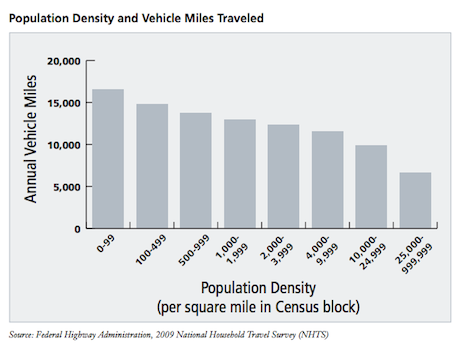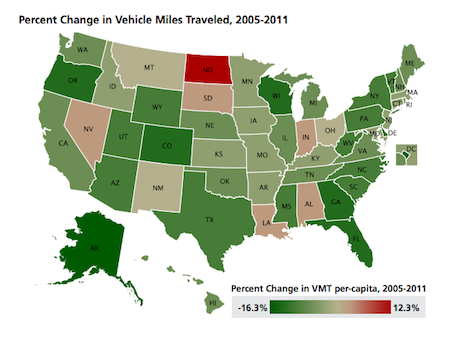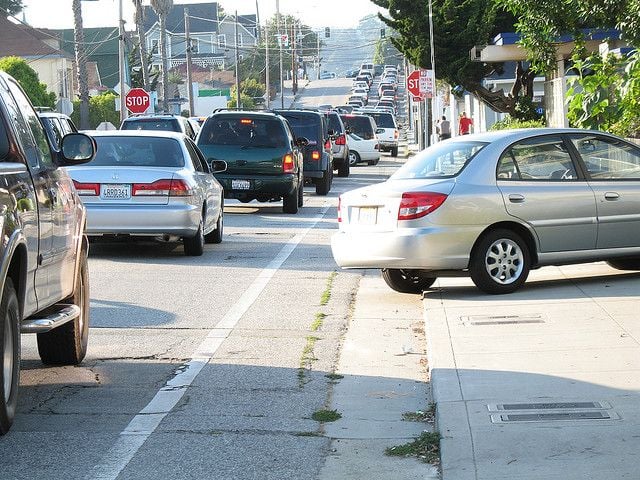Americans are driving less. And — here’s a shocker — millennials (still a stupid moniker) are leading the downturn in driving.
The U.S. Public Interest Research Group (PIRG) released another study today about the nationwide decline in driving. This time, it examines trends by state and finds that driving per person has declined in 46 states since its peak at the end of the Driving Boom, defined as 2005.
Look, I’m not here to carry water for the Millenials Aren’t Buying Cars argument, because I think it’s fundamentally lazy journalism and best left for out-of-touch newspaper columnists. The study says that millennials’ sharp decline in driving is the “strongest indication of a fundamental shift.”
So let’s get this out of the way: People born in the 1980s and ’90s aren’t buying as many cars or driving as much.
The logic here is simple and often never addressed. If you move to a city after college where there are more job opportunities (with higher pay scale than, say, Metro Detroit) and easy access to transit, you have less overhead. So, yeah, my New York City rent was more than half my income when I was 22. But I didn’t have to worry about car payments, insurance, gas and any possible accidents that would eat away at what little savings I did have. I just had to worry about the MTA raising fare prices.
Also, there are plenty of millennials who do like driving and car culture. As Aaron Foley wrote at Jalopnik Detroit, “Still, despite evidence to the contrary, the millenials-hate-driving headlines just keep a-coming. It hasn’t stopped the auto industry from making cars, nor has it stopped people from buying them.” Let’s quit putting everyone in a box that fits into a tidy narrative.
It is notable, however, that driving has declined in almost every state, millennials be damned. It’s not just confined to transit-rich regions like the Northeast corridor, Chicago and the Bay Area. There is some pretty obvious data in the study, like the revelation less driving happens in areas with more density. But PIRG also found that though many people chalk it up to the recession — less money, less driving — driving was in decline three years before the market crashed in 2008.
Vishaan Chakrabarti gave a lecture at The Architectural League in July where he touched on the “subsidy regime” after World War II that fueled America’s highway systems. The government invested more money in highways than any other system, including transit and trains. His argument is that density matters. That’s not new, by any stretch. But when you look at how density fuels less driving, it means transit could be a more sound investment by the government.
“We need to get away from this notion that we are going to do this without subsidies,” Chakrabarti said. “We’re going to beat up the rail system because it takes subsidies? As if the airline industry doesn’t take subsidies, as if cars did not require massive subsidies? We have to find a way to create equilibrium in this conversation.” (My usual caveat that easy access to transit means better access to jobs.)
We’re a long ways from Chakrabarti’s platonic ideal, but the decline in driving needs to be less about millennials and more about the simple fact that Americans of all ages, everywhere, are driving less.
Here, you can see the direct correlation between population density and annual miles driven. It’s a no-brainer — when there is more transit, fewer people drive — but stark when you look at the raw numbers.

The millennial argument is a convenient one. The kids are moving to cities! The kids don’t want to drive! But when you look at the data PIRG provided, it’s clear that this is a nationwide trend. The map below shows that, per person, driving has decreased in 46 states since 2005.

The Equity Factor is made possible with the support of the Surdna Foundation.

Bill Bradley is a writer and reporter living in Brooklyn. His work has appeared in Deadspin, GQ, and Vanity Fair, among others.






_600_350_80_s_c1.jpg)










